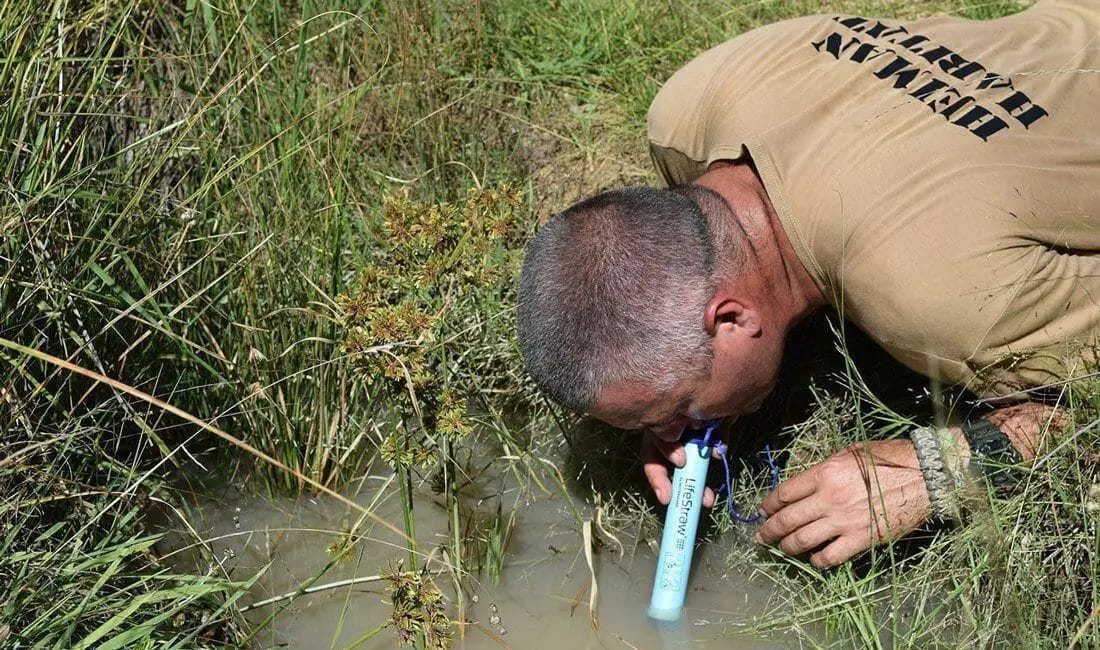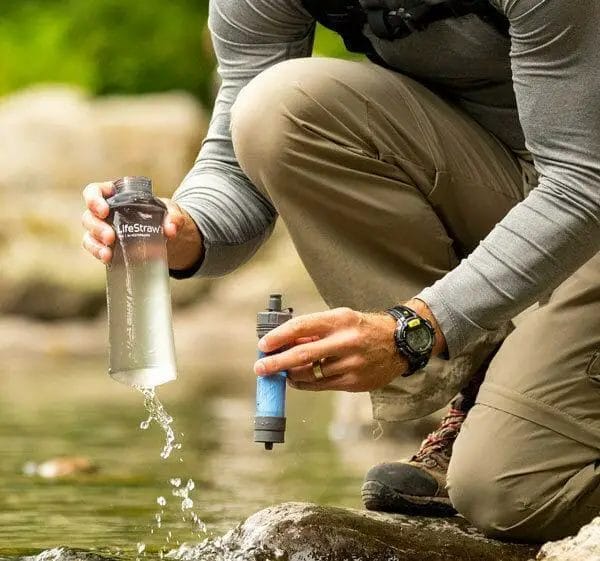The LifeStraw is a device created by Vestergaard, an international company specializing in disease control products for humanitarian purposes. The product was developed in 2005 as part of an effort to reduce the transmission of waterborne diseases. Since then, it has become one of the most impactful life-saving devices ever invented, saving thousands of lives in many parts of the world and solving the water pollution problem little by little.
A 2012 version of the LifeStraw does not contain any chemicals, unlike the 2006 version, which uses iodine to kill bacteria. Mechanical filtration is instead used in the product. The LifeStraw is a microfiltration device since water is forced through hollow fibers with pores less than 0.2 microns wide when you suck on the straw. Drive to learn more about it.
What is a Lifestraw?
A Lifestraw is a water filter of a moderate size used in purifying and filtering water, ensuring its fitness for human intake. It is first invented by Torben Vestergaard Frandsen. A Lifestraw is a purifying device capable of producing 4000 liters (1000 gallons) of drinkable water, guaranteeing five years of clean water intake for an individual.

It is 310 mm in length while its diameter is 30 mm. Lifestraw works by filtration, removing all the parasites, viruses, and bacteria in the water, making it drinkable. Individuals, families, and communities use it, and NGOs distribute it as relief materials to communities lacking drinkable water. This device is also valuable in areas suffering from natural disasters or where good potable water is absent.
How Does The Lifestraw Work?
Lifestraw produces clean water without the utilization of chemical or bacterial treatment; neither is electrical filtration required. It uses the old form of water filtration but still gets rid of bacteria existing in the microbiological stages/levels of the water. An iodine chemical was used to kill bacteria in the first set of Lifestraws produced. However, since 2012, Lifestraw no longer contains chemicals, and it’s still as effective as it earlier was as it now uses mechanical filtration.

Lifestraw works by you sucking on it like a regular straw after sticking it straight into the water source. By doing this, water passes through the perforated fibers possessing pores smaller than 0.2 microns in diameter.
Parasites, bacteria, or dirt of any sought are caught up in the fibers, allowing only the passage of clean water. After drinking, you blow air through the straw, cleaning the filter through this process. Close to a liter of water can be sucked within eight minutes through the Lifestraw.
What Does Lifestraw Not Filter?
- Lifestraw can’t filter chemicals such as arsenic. However, this is dependent on the form of Lifestraw.
- Lifestraw does not filter saltwater, such as seawater
- Melted contaminants cannot be evacuated from water by Lifestraw
- Lifestraw does not filter out viruses. However, the community size of Lifestraw does.
What Does Lifestraw Filter?
- The filtration of parasites, bacteria, and dirt is done by Lifestraw, which prevents one from contracting diseases such as typhoid, cholera, diarrhea, diphtheria, cryptosporidiosis, worms, and so on.
- It enables the evacuation of nearly all parasitic, microplastics, and waterborne bacteria from contaminated water. It removes 99.9999% of bacteria.
- It aids the reduction of turbidity and filters it down to 0.2 microns.
- Lifestraw ensures your protection against weighty metals such as lead. It also protects against the organic chemical matter.
- It evacuates 99.999% of viruses, for example, Hepatitis A, and Rotavirus.
How to Use Lifestraw?
Using it isn’t rocket science; it doesn’t need any installation or anything. It can be used just like a normal straw, and it’ll work in the process. As a result of the primary functions the life straw possesses and its easy carriage from one place to another, it is used in numerous situations and places. It can be used during hiking, camping, boating, running, or other related activities. It can also be used while embarking on a long walk.

Lifestraw has also been developed into water bottles; children can get safe drinking water anywhere. It is distributed as relief materials by NGOs in areas where natural disasters occur.
It is also a helpful tool for the filtration of water for those living in areas with contaminated water sources that have no access to electricity. Anyone can use a Lifestraw anywhere. It is handy and portable; therefore, it can be carried anywhere. The personal type is so portable that it can fit in a handbag or backpack.
Is Lisestraw Actually Useful or Not?
The Lifestraw is a useful product, especially for those in disaster relief or third-world disease alleviation situations. The Lifestraw Family, which is a larger filter intended for home use, can remove viruses and provide plenty of functionality. However, it has been overrated by fanboys who post videos of people drinking toilet water and then resort to name-calling if anyone ever criticizes its performance or design.
For consumer use, the bottled version of the Lifestraw is the only one that should be considered. In addition to being easy to use, it has a good filtration capacity. It may not be as revolutionary as some make it out to be, but it does offer an effective way to filter water on the go. Overall, the Lifestraw can be a useful addition to any disaster-preparedness kit and help ensure emergency access to clean drinking water.
Frequently Asked Questions [FAQs]
1. Does a life straw remove all bacteria?
Yes, it evacuates 99.9999% of waterborne bacteria. Also, it aids in the removal of protozoa present in the water.
2. Does life straw remove viruses?
This is ultimately dependent on the type of life straw in question. This is because viruses are very small and can easily pass through the life straw’s pores. However, the life straw community can not actually remove viruses.
3. Does life straw remove chemicals from water?
Regular Lifestraws like Lifestraw Personal are incapable of removing chemicals from water. However, Lifestraw Go and Lifestraw Home remove organic chemical matter like herbicides, pesticides from water, and chlorine. Water filters that possess the charcoal layer can filter water with heavy metals.
4. How do I know when a life straw expires?
A life straw has its filtering capacity depending on its type. Also, the water sources you drink from can hasten or fasten the expiration of your life straw filter. However, your life straw stops working when it has reached its filtering capacity. This is how you know it has expired.
5. Is LifeStraw Bad Tasting Water?
No. LifeStraw removes harmful bacteria and protozoa from your drinking water. However, it doesn’t taste great. But don’t worry; there are ways to make it more palatable. For example, you can add lemon juice to the LifeStraw before using it. Or you can try adding a pinch of sugar.
Conclusion
The type of LifeStraw product you choose should be determined by the number of people it is expected to serve. LifeStraw filters are your best bet to ensure that you consistently consume clean and safe water. They need no external batteries, which might be restricted if there is no power supply. They have been known to fight harmful chemicals in the water. LifeStraw can be your perfect partner in your hike or any bad situation.
Sarah J. Gregory
352 Hershell Hollow Road
Anaheim, CA 92805






